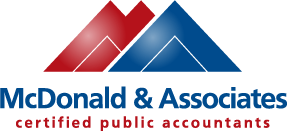New W-4 Creates Questions for Human Resources
With the major Form W-4 overhaul for 2020, you may field questions from your employees. While it’s not your responsibility to provide tax advice to your employees, it’s good to be prepared to help answer common questions about the new IRS form. Here is a summary of the W-4 changes and answers to some common questions you might encounter:
The change
Form W-4 was changed by the IRS in an attempt to make payroll withholdings more accurate and easier for employees to understand following the implementation of the Tax Cuts and Jobs Act. The new Form W-4 eliminates the sometimes confusing allowance system, replacing it with targeted questions, worksheets and fields for dependents, other income and anticipated deductions.
Gone are days of simply increasing or decreasing allowances to get the proper withholding — making a change now requires some tax forecasting.
5 common questions about the new Form W-4
- Do I have to submit a new form?
No. The allowances an employee has on a previous Form W-4 will continue to calculate appropriately in 2020. If changing jobs or an employee wishes to adjust withholdings, completing the new W-4 is required. - Are ALL steps on the new W-4 required to be filled?
No. Step 1 (personal information) and step 5 (your signature) are the only required sections to complete. If your employee only completes steps 1 and 5, a withholding will be calculated under the assumption that he/she is only taking the standard deduction. If your employee has dependents or wishes to make other withholding adjustments they will need to fill out other steps in the form. - Do employees have to complete all the worksheets?
No. However the worksheets are intended to provide a more accurate withholding amount. If an employee has multiple jobs or itemizes deductions, the worksheets will help the payroll department withhold the proper amount from a paycheck while accounting for these other factors. - Will completing the new W-4 affect refunds?
If an employee has the exact same tax situation (income, deductions and credits) in 2020 as they did in 2019, the tax calculation should have minimal impact on the tax refunded or owed. If there is a need to adjust withholdings at any time during 2020, however, the anticipated refund might look a lot different if an employee does not take the time to carefully complete the new Form W-4. - Should an employee adjust their withholdings?
This, of course, is up to the employee. It is best to coach them to speak to their tax advisor. But let them know that it really depends on them. If they want to maximize monthly cash flow or wish to receive a larger refund, then they need to go through the W-4 exercise. While more complicated, per the IRS this new form allows for less guessing when it comes to forecasting their April tax bill. A simple tax forecast that factors in last year’s tax situation and accounts for changes in the current year will provide clarity to the amount that needs to be withheld.
Remember, to avoid an underpayment tax penalty an employee must withhold 100% of last years tax bill or 90% of this year’s tax bill. This moves to 110% of last year’s bill if income is over $150,000 ($75,000 if married filing separate). Finally, coach your employees to double check their paycheck after any change, it is never fun to be surprised by a big tax bill because withholdings are too low.



